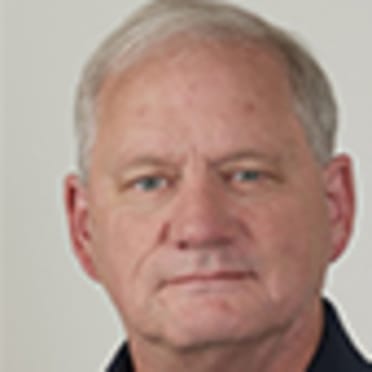ARLINGTON -- No one loves a good debate quite like baseball fans, and with that in mind, we asked each of our beat reporters to rank the top five players by position in the history of their franchise, based on their career while playing for that club. These rankings are for fun and debate purposes only … if you don’t agree with the order, participate in the Twitter poll to vote for your favorite at this position.
Here is T.R. Sullivan’s ranking of the top 5 second basemen in Rangers history. Next week: third basemen.
1. Ian Kinsler, 2006-13
Key stat: Ranks in Rangers’ all-time top 10 in hits (1,145), runs (748), doubles (249), triples (23), home runs (156) and RBIs (539) over eight years in Texas
Ian Kinsler will likely be in the Rangers Hall of Fame at some point in the near future. Julio Franco, on the other hand, has never seemed to have drawn much consideration or vocal support for the honor.
But it is very close as to who was the Rangers’ best-ever second baseman.
Kinsler and Franco were both offensive second basemen with speed and power. Franco was the more professional hitter; he crushed line drives and hit to all fields. Kinsler was a pull hitter with more power. He had two 30-home run, 30-stolen base seasons in Texas.
Franco had the edge in batting average (.307-.273) and on-base percentage (.382-.349) while Kinsler had the higher slugging percentage (.454-.440) while with the Rangers. Both were capable defensive second basemen but never considered Gold Glove candidates.
Kinsler gets the nod because he had a longer shelf life with the Rangers and helped them go to two World Series.
2. Julio Franco, 1989-93
Key stat: Ranks third in club history with a .307 batting average and fifth with a .382 on-base percentage
Franco became the Rangers’ first American League batting champion with a .341 average in 1991. He also had a .408 on-base percentage and a .474 slugging percentage, scored 108 runs, hit 15 home runs, drove in 78 runs and stole 36 bases. It was his best year with the Rangers.
He then injured his right knee playing winter ball in the Dominican Republic and opened the season on the injured list. He was active in April, played a couple of weeks, went back on the IL, missed most of May and then returned at the beginning of June.
The Rangers were struggling and manager Bobby Valentine was trying to force Franco back in the lineup at the expense of other players. Finally, the Rangers had enough. After a 4-3 loss to the Brewers on July 8, Franco went on the injured list and rookie Jeff Frye was called up from the Minor Leagues.
The move became official the next day but got lost amid a much bigger story. Valentine was let go as Rangers manager. Franco did not play the rest of the season and finally underwent overdue surgery in September.
3. Mark McLemore, 1995-99
Key stat: Over the last seven years of his career with the Rangers, Mariners and Athletics, the teams McLemore was on averaged 95 wins per season.
The late broadcaster Mark Holtz gave Mark McLemore his now-famous nickname “Doctor of Defense” in 1996. That seems a bit much considering McLemore never won a Gold Glove in his career. But ...
In 1996, McLemore had a super year defensively as the Rangers’ second baseman. His 2.3 defensive WAR and .857 zone rating were the highest for any American League second baseman. The Gold Glove went to Roberto Alomar, the sixth of 10 he would win in his career.
But an argument can easily be made that McLemore was more deserving, at least in 1996.
4. Alfonso Soriano, 2004-05
Key stat: Named the Most Valuable Player of the 2004 All-Star Game after his first-inning home run off Roger Clemens helped give the AL a 9-4 victory
The Rangers traded shortstop Alex Rodriguez to the Yankees just before Spring Training in 2004 for Alfonso Soriano and a player to be named. The Rangers ended up having to choose between Minor League shortstop Joaquin Arias and second baseman Robinson Canó. The Rangers chose Arias because he was a shortstop and they had both Soriano and Michael Young at second base.
Soriano had two All-Star seasons for the Rangers and then was traded to the Nationals for outfielder Brad Wilkerson and two other players. The Rangers were ready to bring Kinsler to the big leagues to be their second baseman.
The Nationals had three-time All-Star Jose Vidro as their second baseman. So the Nationals moved Soriano to the outfield and he hit 46 home runs with a .911 OPS. Wilkerson had a couple of so-so seasons in Texas and disappeared.
5. Bump Wills, 1977-81
Key stat: Wills set a club record with 52 stolen bases in 1978. It is the oldest offensive record still standing in Rangers history.
Bump Wills was on the cover of Sports Illustrated before he ever played in the Major Leagues. He was touted in Spring Training by the magazine as being the best of an especially promising group of rookies headed to the big leagues. Wills was the son of Dodgers great Maury Wills and was expected to be a star.
He was not. Wills had five average-to-good seasons with the Rangers then was unloaded on the Cubs in 1982. He played one season there and two in Japan before his career came to an end at age 32.
Also getting consideration
Rougned Odor -- His place in Rangers history is still to be written.
Davey Nelson -- He was an All-Star second baseman in 1973.



